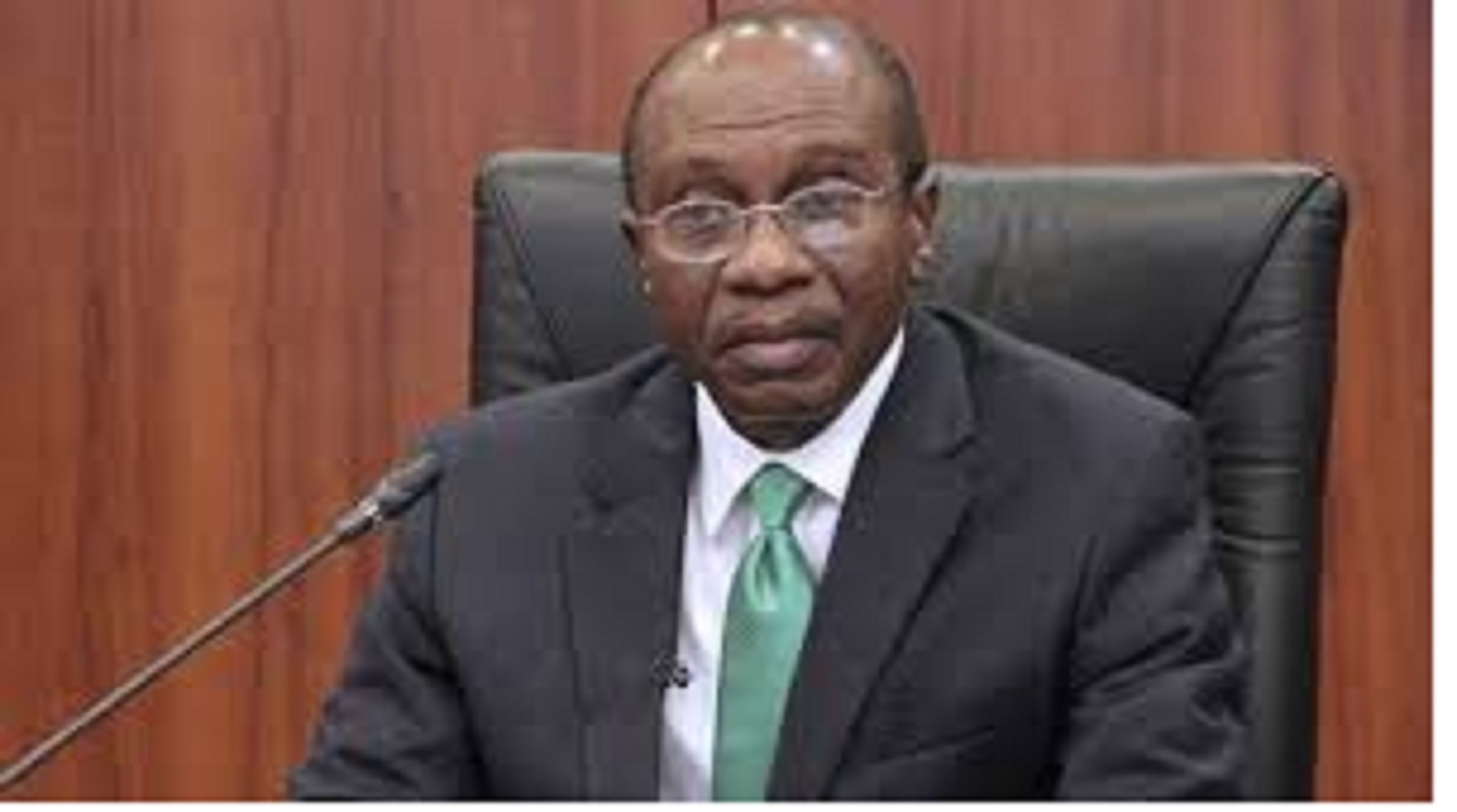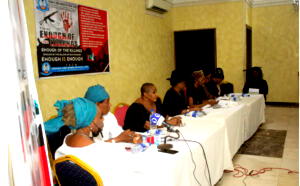CBN Governor, Godwin Emefiele Other fiscical measures By Emeka Anaeto, Business Editor Nigeria’s economy in 2020 has been projected...


Other fiscical measures
By Emeka Anaeto, Business Editor
Nigeria’s economy in 2020 has been projected to decline by -8.91 percent in a worst case scenario and -4.4 percent in a best case scenario, following the ravaging impact of the Coronavirus (COVID-19) pandemic. On a quarter-on-quarter steady decline to year end the country would have slipped back into recession barely three years after the sustained recovery from the same situation.
The time-tested approach to fighting a recession is a stimulus package. The size of the stimulus package will usually determine how shallow or deep the recession would turn out to be.
The Central Bank of Nigeria, CBN, had rolled out a battery of stimulus package right from the onset of the COVID-19 economic impact in March 2020, ahead of some scenarios created by the National Bureau of Statistics, NBS.
The NBS had then built a four-model scenarios based on sizes of the stimulus regime while the federal government had settled for a stimulus of N2.3 trillion to minimize the level of consequential economic decline at about -0.59 percent.
READ ALSO:‘We’ll destroy Rivers’ warmongers emboldened by Amaechi — Wike
It was on the bases of this scenario that the CBN’s stimulus package of N1.11 trillion structured lending could be better appreciated.
However, the challenge remains on the issue of strategy. What is the best way to beat the triple COVID-19 problem of very low foreign exchange, huge unemployment and negative growth?
Expert opinions have been a consensus, focusing on inward looking economic development strategy especially in the real sector, that is agriculture and manufacturing.
In the area of agriculture food security remains the overall objective. This meant focusing on increasing the acreage under cultivation and engaging thousands of young people in farming and agro-allied jobs, with a scheme for guaranteeing off-take of farm produce. This ensures that farmers are assured of an income.
In the area of manufacturing the emphasis includes access to foreign exchange at stable rate, backward integration, import substitution, capacity and output expansion amongst others.
CBN Interventions
The CBN appears to have been ahead of the COVID-19 adversity with its various diversification special funding initiatives. In the area of agriculture and agro-industrialization the apex bank had rolled out the Anchor Borrower Program, ABP, since 2016. This requires further intensification along with on-boarding of other strata of farmers in some specialized funding and other incentive arrangement.
Under the N1.11 trillion COVID-19 stimulus package, the apex bank is providing a N100 billion loan to health authorities as part of the efforts not only to contain the pandemic but also to strengthen and domesticate the sector against any future crises. The fund is for the companies and healthcare practitioners intending to expand/build capacity. It also identifies key local pharmaceutical companies that will be granted funding facilities to support the procurement of raw materials and equipment required to boost local drug production.
In addition to these direct interventions, the CBN’s indirect intervention in form of lending policy has now made the commercial banks to provide credit assistance for the health industry to meet the potential increase in demand for health services and products “by facilitating borrowing conditions for pharmaceutical companies, hospitals and practitioners”.
The apex bank is also set to increase efforts in boosting local manufacturing and import substitution across all critical sectors of the economy.
In this connection the CBN has approved a one-year moratorium on all principal debt repayments from March 1, 2020 and reduced to 5% from 9% the interest rate on central bank intervention loans that are given directly to agriculture and commerce. This has helped to minimize the impact of COVID-19 on price stability in the economy.
The Nigeria Incentive-based Risk Sharing System for Agricultural Lending (NIRSAL) Microfinance Bank, on behalf of the CBN, has started the disbursement of the N50 billion Targeted Credit Facility (TCF) to the beneficiaries.
The facility is a stimulus package which was introduced by CBN, to help mitigate the impact of the COVID-19 pandemic on households and the micro, small and medium enterprises, MSMEs.
Other Measures Yielding Results
There are some other monetary measures which are already helping in starving off most severe impact of COVID-19.
The apex bank has implemented the strengthening of the Loan to Deposit Ratio, LDR, policy which stepped up enforcement of directive to extend more credit to the private sector. Banks are now known to be leveraging the situation to expand the size of supports they give to their borrowing customers.
The CBN also granted regulatory forbearance to banks to restructure terms of facilities in sectors affected by the COVID-19 containment measures especially the shutdowns. Industries such as hospitality, aviation, entertainment, amongst others have benefited immensely and huge numbers of jobs were saved in these industries.
In the circumstance of the crash in crude oil prices Nigeria’s external reserves had come under severe pressure with implications for foreign exchange supplies to businesses and ultimately the exchange rate and prices of goods. Now foreign exchange supply to the CBN has been improved with the measures of directing oil producing and servicing companies to sell foreign exchange earnings to the CBN rather than the Nigerian National Petroleum Corporation.
Related to this is the CBN’s adoption of a unified exchange rate system for Inter-Bank and parallel market rates to ease pressure on FOREX earnings as oil prices continued to plummet.
Additionally, the CBN adopts the official rate of N360 to a dollar for International Money Transfer Operators rate to banks.
For on-lending facilities financial institutions have been directed to engage international development partners and negotiate concessions to ease the pains of the borrowers. This has also recorded significant success with over $50 million already renegotiated.
These are some of the elements of the stimulus package the CBN has rolled out in the past three months as the authorities try to cope with the collapse of crude oil prices, which account for about 90% of foreign exchange earnings and more than half of revenues.
What more should be done
The federal government with its other agencies now needs to complement the CBN initiatives from the perspectives of mass employment signature programmes including mass social housing, using local materials, installing solar power in millions of homes, and providing assistance to daily-paid and self-employed workers – petty traders, artisans like bricklayers, vulcanisers, and electricians as well as commercial drivers and barrow-pushers.
The overall aim would be to stimulate the economy by preventing business collapse and ensuring liquidity; retain or create jobs using labour intensive methods in key areas like agriculture, facility maintenance, housing and direct labour interventions; undertake growth enhancing and job creating infrastructural investments in roads, bridges, solar power, and communications technologies; promote manufacturing and local production at all levels and advocate the use of ‘Made in Nigeria’ goods and services, as a way of creating job opportunities, achieving self-sufficiency in critical sectors of the economy and curbing unnecessary demand for foreign exchange which might put pressure on the exchange rate; and extend protection to the very poor and other vulnerable groups – including women and persons living with disabilities – through pro-poor spending.
A 3-part Structure
The various interventions should be articulated and structured in three parts. The first should consist of “Real Sector Measures”, to comprise a mix of project and policy approaches, which focus on the creation of jobs across the fields of agriculture and agro-processing, food security, housing construction, renewable energy, infrastructure, manufacturing and the digital economy. The aim should be to safeguard existing micro, small and medium scale businesses while ramping up local productive capacity by encouraging opportunities for innovation in the various sectors.
The second part should be “Fiscal and Monetary Measures”, to outline steps that will be taken to maximise government revenue, optimise expenditure and entrench a regime of prudence with emphasis on achieving value for money. The overriding objective should be to keep the economy active through carefully calibrated regulatory interventions designed to de-risk the environment for local production and enterprise, galvanise external sources of funding, rationalise existing debt obligations and boost investments in strategic sectors affected by the COVID-19 pandemic, while supporting the financial viability of States and Local Governments.
And last but most important, ‘Implementation’.
This is the key to the success of all other plans and measures. Each Minister will be responsible for supervising the implementation of plans situated in their Ministry through a ministerial implementation Committee chaired by the Minister. The Ministerial Committee will be responsible for ensuring synergy between stakeholders, especially the public and privatae sector. The Committees shall also drive the execution of specific projects, coordinate the entire sectorial value chain and ensure resolution of bottlenecks impeding implementation.
The CBN and the Ministry of Finance should jointly take charge of the Economic Sustainability Committee, which is an inter-Ministerial Committee, to be responsible for general oversight of implementation and will report to the President. Expenditure will be monitored through the National M&E Framework and the Budget Office of the Federation.
The post RESCUING THE ECONOMY FROM COVID-19: Updates on CBN’s monetary measures appeared first on Vanguard News.

No comments